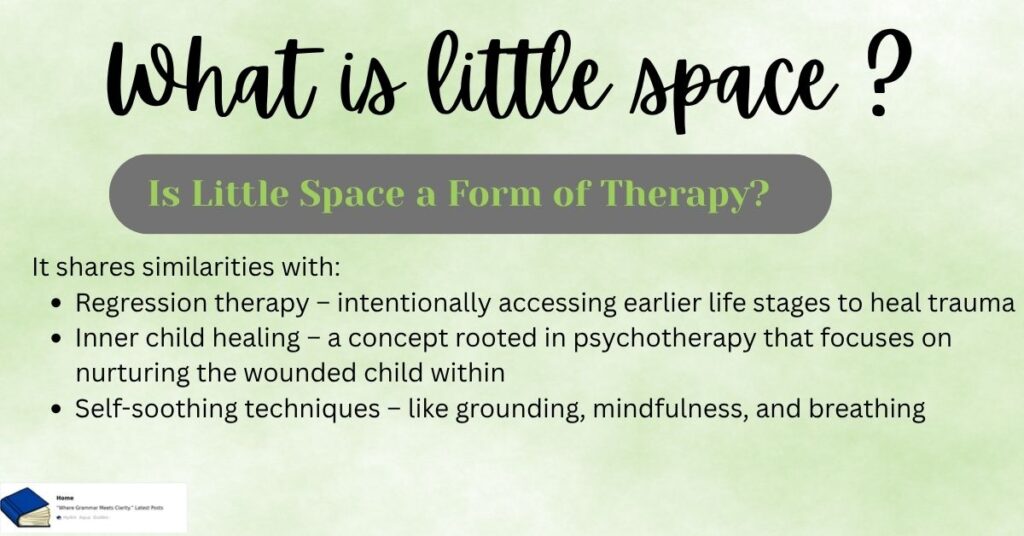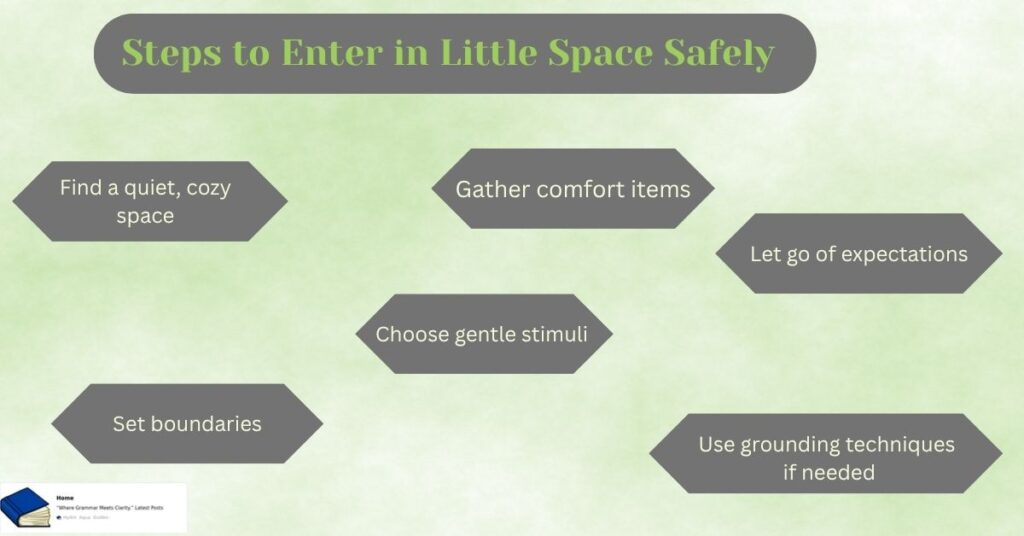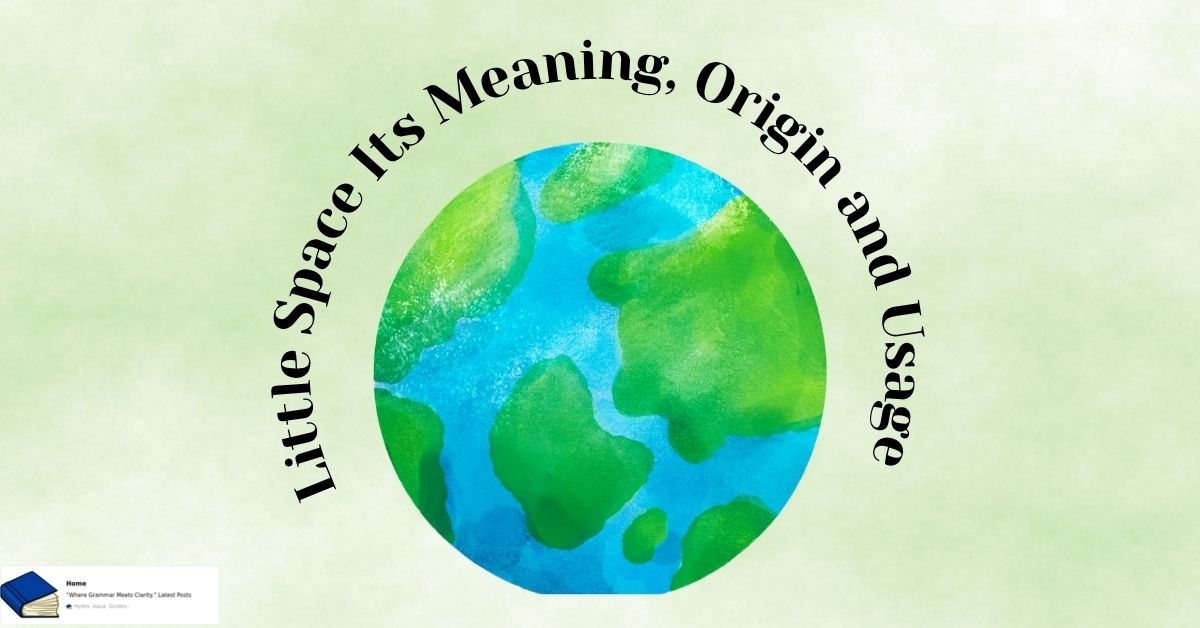Ever wished you could hit pause on life and retreat into a softer, simpler version of the world? That’s what little space is all about.
Little space refers to a mental state where a person temporarily adopts a childlike mindset. It’s not about immaturity or acting out. Instead, it’s often a coping mechanism a way to find emotional safety, calm, and comfort in the face of adult pressures.
Imagine coming home after a draining day and curling up with a plush toy, watching your favorite cartoon from childhood, sipping hot cocoa from a sippy cup. You’re not being silly you’re nurturing your inner child.
In simple terms, what does little space mean? It means returning to a mental space where life feels innocent, safe, and manageable.
The Little Space Meaning: More Than Just Playacting
The little space meaning can vary depending on the person. But at its core, it’s about healing, self-soothing, and escaping adult worries.
Here’s what it often involves:
- Childlike behaviors (like coloring books, pacifiers, plushies)
- Comforting routines (storytime, lullabies, bathtime rituals)
- A gentle tone of speech or referring to oneself in third-person
- Preference for soft clothing, pastel colors, or sensory-friendly textures
- An increased need for emotional reassurance
For many, entering little space is like stepping into a miniature haven a youthful oasis where they can reset their emotional balance.
Is Little Space a Form of Therapy?
Technically speaking, little space isn’t a formal therapy recognized by psychology. But its therapeutic value can’t be denied.

So while it might not be prescribed by a clinician, many find emotional comfort, stress relief, and psychological safety in it.
What is little space in mental health? It’s a self-driven practice where people enter a childlike mental state to manage stress, anxiety, or unresolved trauma.
Origins: Where Did Little Space Come From?
The concept of little space doesn’t have a single point of origin. But it has roots in several areas:
1. Psychological Theories of Regression
Sigmund Freud and later psychologists discussed regression as a natural human response to stress. When overwhelmed, people may revert to childlike states not as dysfunction, but as a way to cope.
2. Inner Child Psychology
Therapists like John Bradshaw made popular the idea that we all carry an “inner child” the part of us shaped by early experiences. Healing that part often involves childlike behaviors.
3. Online Age Regression Communities
In the late 2000s, platforms like Tumblr, Reddit, and Discord began hosting online communities centered around age regression and little space. These groups shared:
- Little space coping strategies
- Photos of safe spaces
- Tips on how to enter little space safely
- Supportive discussions about mental health
Today, you’ll find thousands of posts tagged with #littlespace, #regressor, and #innerchildhealing.
Who Enters Little Space and Why?
Contrary to common assumptions, it’s not just “quirky teens” or “attention-seekers.” Many adults use little space as a form of mental retreat.
🔹 Meet Sarah – A 28-Year-Old Nurse
Sarah works 12-hour shifts in a busy hospital. After dealing with trauma, loss, and non-stop pressure, she enters little space at home by wearing fuzzy pajamas, coloring in a children’s book, and watching Bluey. “It’s my way of exhaling,” she says.
🔹 Meet Jordan – A Grad Student with ADHD
Jordan struggles to regulate emotions. When life gets too intense, Jordan turns to childhood state practices like cuddling stuffed animals and watching The Lion King to find balance.
Common Elements of a Little Space Routine
Not every person’s experience is the same, but many find comfort in certain shared items and practices. Here are some popular elements used to enter or enhance little space:
| Item/Practice | Why It Helps |
|---|---|
| Plush toys | Offers physical comfort and nostalgia |
| Storybooks | Evoke simpler times, engage the imagination |
| Soft music/lullabies | Soothing sounds trigger emotional relaxation |
| Cartoons and children’s movies | Safe, familiar, joyful content |
| Pacifiers or bottles | Sensory comfort and calming oral fixation |
| Oversized hoodies/blankets | Physical security and warmth |
| Baby talk or simplified speech | Helps shift mindset and lower emotional tension |
| Coloring books/crayons | Creative expression without pressure or judgment |
Little Space vs. Age Regression: Are They the Same?
Not exactly. Let’s break it down:
- Age regression is a broader term that includes involuntary or voluntary regression to an earlier age. It may happen as part of therapy or during trauma responses.
- Little space, on the other hand, is usually intentional and safe. People choose to enter it, often for emotional comfort or stress relief.
That said, they overlap. Many who practice age regression create or enter little space as part of their process.
What Little Space Is Not
Let’s clear up some common myths and misconceptions:
❌ It’s not about being inappropriate or infantilized.
Contrary to some internet misunderstandings, little space has nothing to do with exploitation or inappropriate behaviors. It’s deeply personal, emotional, and often private.
❌ It’s not always linked to trauma.
While some use it to heal from past pain, others enter little space simply because it brings peace, joy, or nostalgic comfort.
❌ It’s not attention-seeking.
In fact, many who use little space do so quietly, without telling others. It’s often a solo practice.
How to Enter Little Space Safely

If you’re wondering how to enter little space safely, the first rule is simple: Create a judgment-free zone for yourself.
Here are some steps:
- Find a quiet, cozy space – A bedroom, reading nook, or even a bathroom can work.
- Gather comfort items – Soft pillows, plushies, sensory toys, blankets.
- Choose gentle stimuli – Cartoons, nursery rhymes, pastel visuals, slow music.
- Let go of expectations – Don’t force yourself to “act” a certain way.
- Use grounding techniques if needed – Especially if you experience dissociation or anxiety.
- Set boundaries – If you live with others, communicate your need for uninterrupted time.
The Psychological Benefits of Entering Little Space
Many people report powerful emotional shifts after spending time in little space. Here’s why:
✅ Emotional Reset
Reverting to a childlike mindset helps the brain slow down and exit “survival mode.”
✅ Self-Compassion
Instead of criticizing yourself for being tired or overwhelmed, little space encourages nurturing and gentleness toward your inner self.
✅ Reduced Stress & Anxiety
Engaging in nostalgic behavior has been shown to reduce cortisol levels, making this a highly effective stress relief technique.
✅ A Break from Adult Responsibilities
Just like taking a vacation, little space gives you a mental holiday only it’s cheaper and accessible anytime.
How to Support Someone in Little Space
If someone you know (like a partner or close friend) uses little space, here’s how to support them:
- Respect their space. Don’t tease or invalidate them.
- Offer to participate if they want you to like reading them a story or helping set up their space.
- Use gentle language. Baby talk or pet names (like “sweetie” or “kiddo”) can be comforting if welcomed.
- Don’t overanalyze. Sometimes it’s just about relaxing not deep trauma work.
- Let them re-enter adulthood gently. Coming out of little space can feel jarring. Offer hugs, snacks, or kind words.
What Does Little Space Mean Online?
Thanks to online age regression communities, the term little space has gained popularity across platforms like TikTok, Tumblr, Reddit, and Instagram. You’ll find content like:
- “My Little Space Routine” videos
- “How I set up my regression space”
- “Favorite cartoons to watch in little space”
- “Healing inner child through little space” posts
While it’s wonderful that people can connect and share, it’s also important to be cautious:
- Watch for misinformation.
- Don’t compare your experience to others.
- Seek out safe, moderated communities.
Why Little Space Is Gaining Popularity
It’s no surprise that more adults are turning to little space in the age of constant burnout, economic stress, and social overload.
Returning to simpler times offers:
- Relief from sensory overwhelm
- A sense of control in a chaotic world
- A break from toxic productivity culture
In short, little space is becoming a modern sanctuary an inner playground where adults can feel safe, loved, and at peace.
Conclusion
So, what is a little space, really?
It’s not about being childish it’s about being human. The cozy blanket you wrap around your mind when the world feels too harsh. It’s where you reconnect with the part of you that still believes in magic, giggles at cartoons, and finds joy in coloring outside the lines.
Whether it’s through soft music, teddy bears, or simply closing your eyes and imagining you’re five years old again little space can be a tool for healing, grounding, and emotional growth.
If you’ve ever needed a break from adulting, this might just be the mental retreat you didn’t know you needed.
Bonus: Little Space Quick Guide
| Topic | Summary |
|---|---|
| What is little space? | A mental state of childlike mindset for comfort and self-care |
| Why do people use it? | For emotional safety, healing, and stress relief |
| Is it therapy? | Not formally, but often therapeutic in nature |
| Is it safe? | Yes, with boundaries and mindful intention |
| What helps? | Cartoons, soft clothes, toys, gentle speech, safe environments |
| Where to find community? | Reddit, Tumblr, Discord, TikTok (with caution) |









